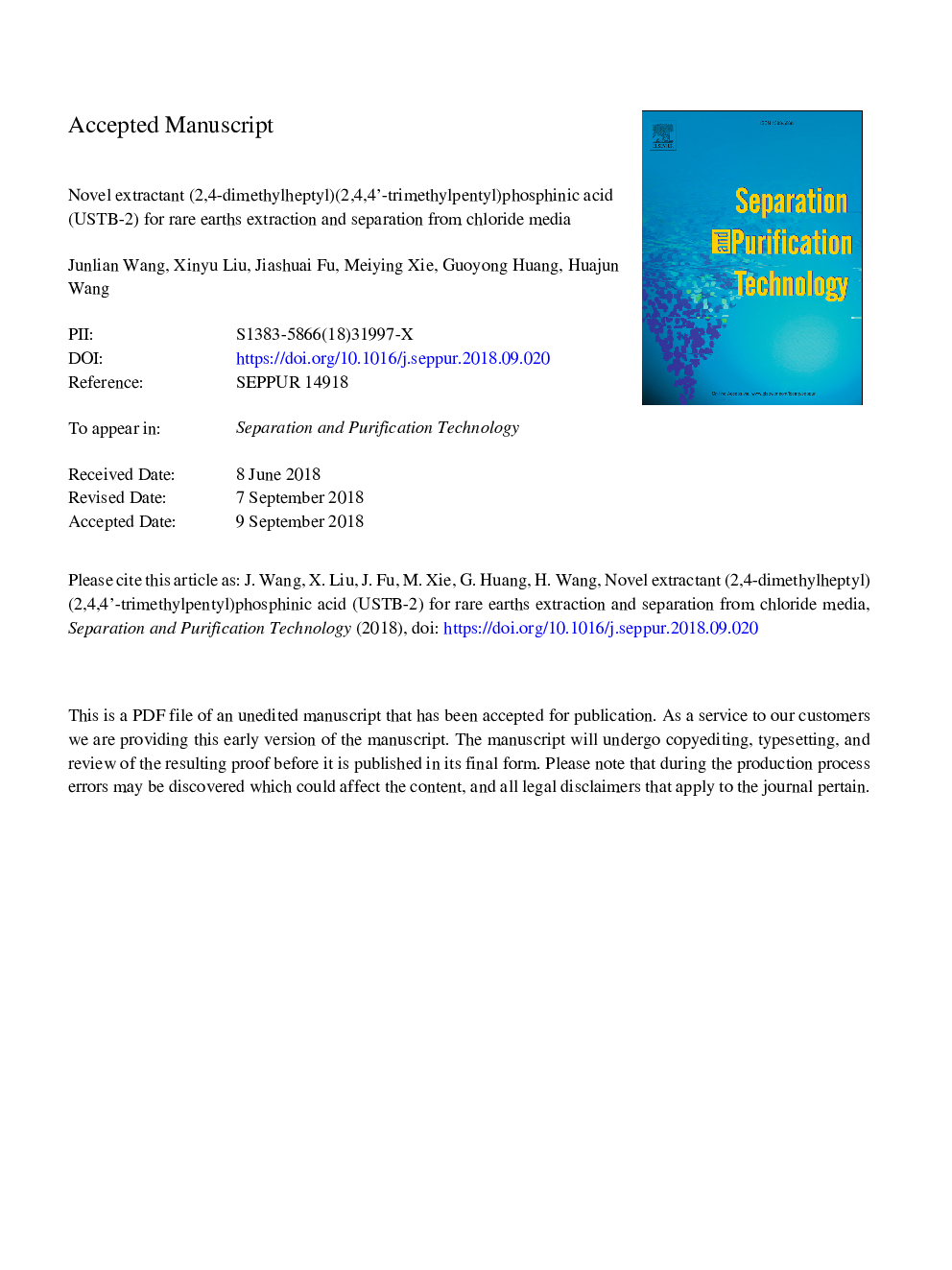| Article ID | Journal | Published Year | Pages | File Type |
|---|---|---|---|---|
| 11003349 | Separation and Purification Technology | 2019 | 21 Pages |
Abstract
Scientists have always been seeking more efficient extractants for rare earths extraction and separation, especially for heavy rare earths. In this paper, a novel extractant (2,4-dimethylheptyl)(2,4,4â²-trimethylpentyl)phosphinic acid (USTB-2) was synthesized. The structures of the intermediate and USTB-2 were characterized by 31P NMR, 1H NMR, FT-IR and ESI-MS. Its pKa was 5.62. Its extraction ability was between Cyanex 272 and P507. Its extraction mechanism was cation exchange. Its extraction capacity was larger than that of Cyanex 272 and lower than that of P507. Its solubility in 3â¯mol/L HCl and deionized water was 11.2â¯mg/L and 19.0â¯mg/L, respectively. The Lu(III) loaded in USTB-2 solution can be easily stripped by HCl, HNO3 and H2SO4. It has good separation performance for heavy rare earths. Its average separation factor (β¯) for adjacent heavy REs from Gd to Lu was 2.18. For some heavy RE couples like Er/Ho, Yb/Tm and Lu/Yb (especially for Lu/Yb), USTB-2 possesses even better separation performance than Cyanex 272. Its extraction efficiency for nonferrous metal ions was in the order Alâ¯>â¯Gdâ¯>â¯Znâ¯>â¯Ndâ¯>â¯Laâ¯>â¯Coâ¯>â¯Cu. The separation factors of Al/Gd, Gd/Zn, Zn/Nd, La/Co by USTB-2 were 2.67, 5.39, 3.35 and 26.67, respectively.
Related Topics
Physical Sciences and Engineering
Chemical Engineering
Filtration and Separation
Authors
Junlian Wang, Xinyu Liu, Jiashuai Fu, Meiying Xie, Guoyong Huang, Huajun Wang,
